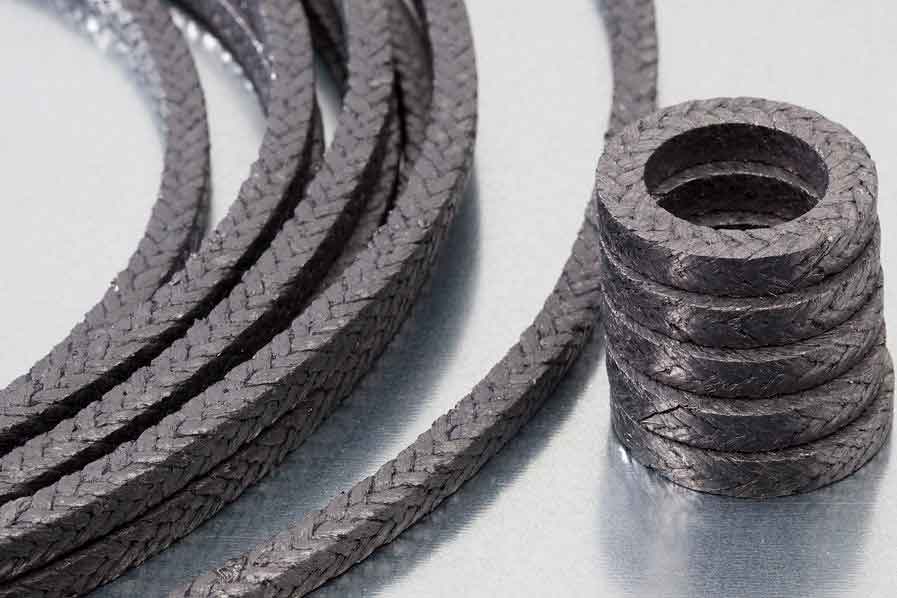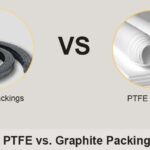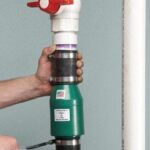Are you facing the challenge of choosing between graphite and Teflon valve packing? This decision is crucial for the efficiency and longevity of your machinery.
The right choice can enhance performance, reduce maintenance costs, and prevent leaks. But how do you know which is right for your needs? Imagine having the confidence that your valve packing can withstand high temperatures, resist chemical attacks, and provide a tight seal.
Sounds ideal, right? You’ll discover the key differences between graphite and Teflon valve packing. You’ll learn about their unique benefits, practical applications, and how they can impact your operations. Stick around, because by the end, you’ll be equipped with the knowledge to make an informed decision that can save you time, money, and headaches.
Material Composition
Understanding the material composition of valve packing is crucial. It affects performance and longevity. Graphite and Teflon are popular choices. Each has unique properties. These properties determine suitability for different applications.
Graphite Structure
Graphite is a form of carbon. It has a layered structure. These layers slide over each other easily. This gives graphite its lubricating qualities. It’s heat resistant. It can withstand high temperatures. Graphite is chemically inert. It resists chemical reactions. This makes it ideal for industrial environments.
Teflon Structure
Teflon is a synthetic polymer. Its scientific name is Polytetrafluoroethylene (PTFE). It has a chain-like structure. This structure is stable and strong. Teflon is non-reactive. It resists most chemicals. It’s also a great insulator. Teflon is flexible. It handles movement well. This makes it useful in dynamic applications.

Credit: www.gallagherseals.com
Performance Characteristics
Understanding the performance characteristics of valve packing materials is crucial. Graphite and Teflon are popular choices. Each material offers unique benefits. Let’s explore these benefits in detail.
Temperature Resistance
Graphite boasts excellent temperature resistance. It can handle extreme heat. This makes it suitable for high-temperature applications. Teflon also offers good resistance but less than graphite. It is ideal for moderate temperature conditions. Choose graphite for high heat environments.
Pressure Handling
Graphite excels in high-pressure situations. Its structure withstands intense pressure. This makes it great for demanding applications. Teflon performs well under moderate pressure. It is perfect for everyday uses. Opt for graphite in high-pressure scenarios.
Durability And Longevity
Choosing the right valve packing is crucial for ensuring the durability and longevity of your industrial systems. When comparing graphite and Teflon valve packing, understanding their endurance in wear and tear, along with maintenance needs, can help you make an informed decision. Let’s dive deeper into what each option offers.
Wear And Tear
Imagine the relentless pressure and constant movement your valve packing endures. Graphite, known for its robustness, can withstand extreme temperatures and harsh conditions without losing its integrity. Its ability to handle pressure makes it a favorite in demanding environments.
Teflon, on the other hand, is celebrated for its resistance to chemicals and low friction, making it ideal for applications where smooth operation is key. However, it might not be as resilient as graphite under high temperatures.
Have you ever had to replace valve packing more often than expected? Consider the environment you are working in. Teflon might save you in a chemical-laden setup, but graphite could be your best bet in high-heat scenarios.
Maintenance Needs
Maintenance can be a real headache. Graphite valve packing typically requires less attention due to its durability in harsh conditions. It can take a beating and still perform well, reducing the frequency of check-ups.
Teflon, while excellent in specific settings, might demand more regular inspections to ensure it hasn’t degraded, especially if exposed to high temperatures. This means more time spent monitoring and less focus on other tasks.
Think about the time you spend on maintenance. Is constant upkeep draining your resources? Opting for graphite could ease that burden, while Teflon might demand a bit more diligence in certain environments.
In making your choice, consider the operational demands and maintenance resources at your disposal. Which option aligns best with your needs? Your answer might just save you time and effort in the long run.

Credit: www.nbseals.com
Chemical Compatibility
Graphite and Teflon valve packing offer unique chemical compatibility. Graphite excels in high temperature and pressure conditions. Teflon provides excellent chemical resistance and low friction. Choose based on your application’s specific needs.
In the world of industrial valve packing, chemical compatibility is a critical factor. Selecting the right material ensures the longevity and efficiency of your equipment. Graphite and Teflon are popular choices, each with unique benefits. But how do they perform in different chemical environments? Let’s dive into their compatibility with various applications.Corrosive Environments
Graphite packing shines in corrosive environments. Its resistance to extreme temperatures and harsh chemicals makes it a robust choice. Imagine a factory with high levels of sulfuric acid; graphite would withstand the corrosive attack without breaking a sweat. Teflon, on the other hand, is not far behind. It offers excellent chemical resistance, especially in acidic and alkaline conditions. However, it may not handle high temperatures as gracefully as graphite. When dealing with corrosive substances, consider the temperature and chemical exposure to make the best choice.Non-reactive Applications
In non-reactive applications, the choice between graphite and Teflon becomes more nuanced. Teflon is an excellent candidate due to its non-stick nature and low friction. It’s perfect for food processing or pharmaceutical industries, where contamination could be a concern. Graphite provides a robust alternative where temperature fluctuations are a factor. It maintains its integrity and sealing capability across a wide range of conditions. Think about an application where both temperature control and non-reactivity are important; your choice might lean towards graphite. When choosing between these materials, ask yourself: What is the most important factor for my application—temperature tolerance or chemical resistance? Your answer will guide you toward the right packing solution. Remember, the right choice not only enhances performance but also saves costs in the long run. Have you faced challenges with valve packing materials? Share your experiences below!Cost Comparison
Choosing the right valve packing can be challenging. Understanding cost differences is key. Graphite and Teflon are popular options. Both offer unique benefits and pricing. This section focuses on cost comparison. It covers initial investment and long-term costs.
Initial Investment
Graphite valve packing has a higher initial cost. It’s known for durability and high-temperature resistance. Teflon valve packing costs less initially. It’s preferred for its chemical resistance and flexibility. The choice between the two affects upfront spending.
Long-term Costs
Graphite valve packing lasts longer. This means fewer replacements over time. Teflon might need more frequent changes. It can wear faster under certain conditions. Maintenance and replacement costs should be considered. Over time, graphite can be more economical.
Environmental Impact
When considering the environmental impact of valve packing materials, graphite and Teflon offer distinct advantages and challenges. Understanding these can help make more eco-friendly choices. Let’s dive into the environmental footprint of each, starting with how they are made and ending with their disposal.
Manufacturing Processes
Graphite is typically derived from natural resources. The extraction process can disrupt ecosystems. However, it’s relatively less energy-intensive compared to synthetic materials.
Teflon, on the other hand, is a synthetic polymer. Its production involves complex chemical processes that can release greenhouse gases. This makes Teflon’s initial environmental footprint larger.
Have you ever thought about how the energy consumption in manufacturing affects our planet? Choosing materials with lower energy demands can significantly reduce your carbon footprint.
End-of-life Disposal
Graphite packing is biodegradable to some extent. This means it can break down naturally over time. However, improper disposal can still pose risks to the environment.
Teflon is notorious for its durability. While this is great for product longevity, it poses a challenge for disposal. Teflon doesn’t decompose easily, leading to potential landfill issues.
As you evaluate these materials, consider how they will be disposed of. Is there a recycling option available? This small step can make a big difference in reducing waste.
Choosing between graphite and Teflon involves weighing their environmental impacts. Which will you choose to align with your eco-friendly values?
Industry Applications
Valve packing plays a crucial role in various industries, maintaining efficiency and safety. Graphite and Teflon are two popular materials used for valve packing. Each offers unique advantages depending on the application. This section explores how these materials perform in specific industry settings.
Oil And Gas
In the oil and gas sector, reliability is key. Graphite valve packing is favored for its heat resistance. It withstands high temperatures and pressure, crucial in drilling operations. Its ability to seal effectively prevents leaks. This ensures environmental safety and operational efficiency. Teflon is also used, especially in lower temperature applications. It provides chemical resistance, useful in environments with corrosive substances.
Chemical Processing
Chemical processing demands materials that resist harsh chemicals. Teflon valve packing excels here. Its non-reactive nature makes it ideal for handling aggressive media. It maintains performance under exposure to acids and bases. Graphite is chosen for its durability in high-temperature processes. It ensures tight seals in reactors and pipelines, preventing contamination. Both materials contribute to safe, efficient chemical processing.

Credit: hansaplas.com
Choosing The Right Packing
Choosing between graphite and teflon valve packing depends on your needs. Graphite offers high temperature resistance, while teflon provides excellent chemical resistance. Both have unique properties suitable for different applications.
Choosing the right valve packing can be a game-changer in ensuring efficiency and longevity in your systems. Whether you’re dealing with high-pressure steam or corrosive chemicals, the choice between graphite and Teflon valve packing can significantly impact performance. Understanding your specific needs and priorities is crucial to making an informed decision. Let’s dive into the key factors to consider when selecting the perfect packing for your application.Application Requirements
Start by assessing the specific requirements of your application. Graphite packing is often favored in high-temperature and high-pressure environments due to its excellent thermal stability. It works well in industries like power generation where conditions can be extreme. On the other hand, Teflon packing is ideal when dealing with aggressive chemicals. It’s highly resistant to corrosion and can handle a wide range of pH levels. Think about what kind of substances your system will handle and choose accordingly. Consider whether you need a packing material that can withstand frequent temperature fluctuations or chemical exposure. Each material has its strengths, so matching them to your operational environment is key.Performance Priorities
What performance aspects are most important to you? Graphite offers superior sealing capabilities, which means less leakage and better efficiency. This can be crucial if you’re aiming to minimize maintenance and downtime. If low friction is a priority, Teflon might be the better choice. It provides excellent lubricity, reducing wear and tear on the valve components. This can be particularly beneficial in applications where smooth operation is critical. Weigh the importance of factors like longevity, cost, and ease of installation. Your priorities will guide you in choosing a packing that meets your operational goals. — Have you ever faced a situation where the wrong packing led to unexpected downtime or maintenance challenges? Share your experiences in the comments below, and let’s learn from each other’s insights.Frequently Asked Questions
What Is The Main Difference Between Graphite And Teflon Valve Packing?
Graphite offers better heat resistance. Teflon is excellent for chemical resistance. Choose based on application needs.
Which Is More Durable, Graphite Or Teflon Valve Packing?
Graphite is more durable in high-temperature environments. Teflon excels in chemical resistance and lower temperatures.
Can Teflon Valve Packing Withstand High Temperatures?
Teflon is not suitable for very high temperatures. It performs best in moderate temperature ranges.
Is Graphite Valve Packing Suitable For Chemical Applications?
Graphite resists heat well but may not handle aggressive chemicals. Consider application specifics when choosing.
Which Valve Packing Is Best For Steam Applications?
Graphite is ideal for steam applications. It withstands high temperatures effectively.
Conclusion
Choosing the right valve packing is crucial for system efficiency. Graphite offers excellent temperature resistance, ideal for high-heat applications. Teflon provides superb chemical resistance, great for corrosive environments. Each option has its strengths. Consider your specific needs and conditions. Graphite suits heat, while Teflon excels with chemicals.
Balance performance, durability, and cost. Make an informed decision for your system’s longevity. A wise choice ensures effective sealing and system reliability. Always assess your application’s demands and consult experts if needed. Proper valve packing leads to smooth operations and reduced maintenance costs.
Your system’s success depends on it.





